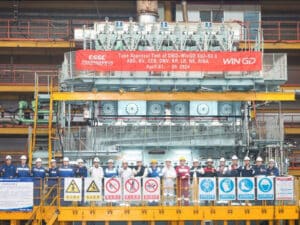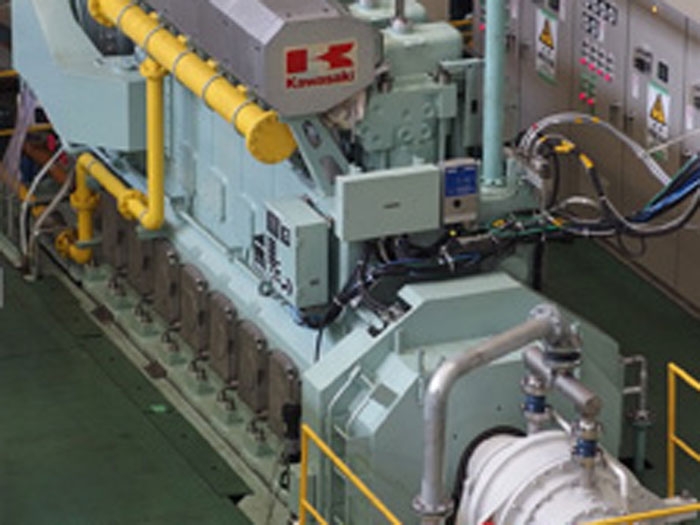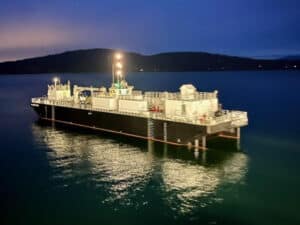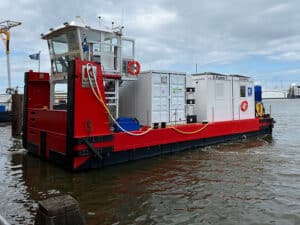
Kawasaki gas engine gets DNV type approval
Written by Nick Blenkey
APRIL 9, 2014 — Kawasaki Heavy Industries, Ltd. has introduced the L30KG gas engine: a main engine for large vessels, fueled solely by gas and with an output capacity of over 2 MW.
It is the first Japanese-made gas engine to obtain type approval from DNV. Kawasaki has already started marketing activities and will also complete steps to obtain type approval for the control system.
Available in 5, 6, 7, 8 or 9 cylinder configurations with rated outputs of 2,225 kW to 4,500 kW, the engine has a bore of 300 mm, a stroke of 480 mm and a speed of 750 rpm
Development of the marine gas engine follows the launch of a Kawasaki gas engine for the distributed power generation market that is said to achieve the world’s highest electrical efficiency of 49.0% and NOx emissions below 200 ppm (at 0% O2).
The L30KG is based on this technology, addressing needs for maritime application such as load fluctuation. It also features technology to support two types of propulsion systems: a mechanical propulsion system in which the engine is coupled directly with the propeller, and an electrical propulsion system in which the engine generates electricity to drive the propeller indirectly.
Kawasaki has conducted land-based tests using a 2.7 MW (6-cylinder) demonstration engine at its Kobe Works.
Kawasaki notes that the International Maritime Organization (IMO) mandates a phased reduction of CO2 as well as NOx and SOx emitted from marine vessels. NOx emissions from diesel engines will be subject to Tier III regulations starting in 2016, which require a reduction of at least 80% compared to Tier I levels when sailing in the emission control areas.
While the gas engine is exempted from NOx emissions regulations, it can reduce emissions to far below the level set by Tier III regulations without relying on special equipment such as an SCR (Selective Catalytic Reduction) system.
Kawasaki says that “its superior environmental performance also allows significant reduction of CO2 and SOx emissions compared to diesel engines, thus helping marine vessels meet various environmental regulations.”





Leave a Reply
You must be logged in to post a comment.